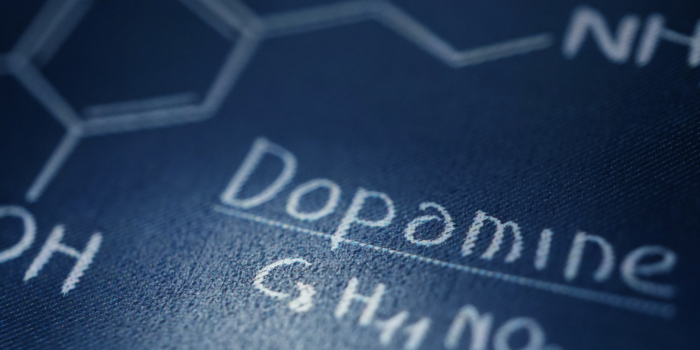The Power of Dopamine and Reward in Everyday Life

Imagine you’re crossing the finish line of a challenging race, your legs burning with exertion, your lungs filled with the sweet taste of victory. As the crowd cheers, you feel an exhilarating rush of accomplishment, a surge of energy that wipes away the fatigue and leaves you with an unshakeable sense of triumph. In that electrifying moment, you are riding high on a wave of pure euphoria, your heart pounding with joy.
But what if I told you that this surge of exhilaration isn’t just about crossing the finish line? What if I told you that it’s also the work of a powerful chemical in your brain called dopamine? This “reward molecule” fuels our ambition, drives our motivation, and enhances our moments of triumph and joy.
In this blog post, we’ll dive into the captivating world of dopamine and reward, and uncover its vital role in our mental and emotional well-being. From its role in motivation to its influence on addiction, join us as we explore the science behind dopamine and how this remarkable neurotransmitter helps shape our lives.
Unlock the Secrets to a Happier, Healthier You: This post is part of our series diving into the science behind the mood-altering hormones and neurotransmitters that shape your daily experiences. In this series, we will explore the intricate roles of Serotonin, Dopamine, Endorphins, Oxytocin, Adrenaline, Cortisol, Melatonin, Estrogen, and Progesterone, unraveling their profound impact on your mental and emotional well-being.
Disclaimer:
This blog post contains affiliate links. This means that I may earn a commission if you click on the link and make a purchase, at no additional cost to you. Please note that I only recommend products or services that I genuinely believe in and that align with the content and values of my blog. Your support through these affiliate links helps me maintain and improve the quality of my content. Thank you for your support!
Exploring Dopamine: What is it and How is it Made?
Dopamine, often called the “reward neurotransmitter,” is vital for motivation, pleasure, and even our ability to move. But what exactly is dopamine, and how does our body produce it? Let’s break it down by following the journey from the amino acid tyrosine to dopamine.
The Building Block: Tyrosine
Tyrosine is an amino acid crucial for various physiological functions, including the production of neurotransmitters like dopamine. Our bodies can obtain tyrosine in two ways: directly from foods rich in tyrosine and through the conversion of another amino acid called phenylalanine. We get both tyrosine and phenylalanine from foods such as meat, fish, eggs, dairy products, and some nuts and seeds. By consuming these foods, we’re ensuring that we get both tyrosine directly and the potential to synthesize more tyrosine from phenylalanine as needed. This dual pathway helps maintain a consistent supply of tyrosine for our body’s essential functions, including the production of neurotransmitters like dopamine.
Absorption into the Bloodstream
When you eat foods rich in tyrosine or phenylalanine, your digestive system breaks them down into their basic components, including these amino acids. These components are then absorbed into your bloodstream from your intestines. The body can then utilize tyrosine for various physiological processes, including neurotransmitter production like dopamine. Phenylalanine still needs to be converted into tyrosine.
Conversion of Phenylalanine to Tyrosine
Once in the bloodstream, phenylalanine travels to the liver, where it undergoes enzymatic conversion into tyrosine by the enzyme phenylalanine hydroxylase. This enzyme adds a hydroxyl group (an oxygen and hydrogen molecule) to phenylalanine, transforming it into tyrosine. This conversion process in the liver is crucial for ensuring a steady supply of tyrosine, which is essential for various bodily functions, including the synthesis of neurotransmitters like dopamine.
Transport to the Brain
Once in the bloodstream, tyrosine travels to various parts of your body, including your brain. The bloodstream acts like a highway, delivering nutrients to different tissues and organs.
Dopamine Synthesis in the Brain
Tyrosine is the starting material for making dopamine in the brain. This process happens inside special cells called neurons. These neurons have enzymes that help convert tyrosine into dopamine through a series of steps.
Enzymatic Conversions
Here’s how tyrosine gets turned into dopamine:
Tyrosine to L-DOPA:
Inside neurons, the enzyme tyrosine hydroxylase plays a crucial role in dopamine production. Tyrosine hydroxylase modifies tyrosine by adding a hydroxyl group to it. This transformation turns tyrosine into L-DOPA (L-3,4-dihydroxyphenylalanine), which is an important intermediate in dopamine synthesis.
L-DOPA to Dopamine:
After L-DOPA is formed, another enzyme called aromatic L-amino acid decarboxylase steps in. This enzyme is also found within neurons and is responsible for converting L-DOPA into dopamine. In this process, aromatic L-amino acid decarboxylase removes a carboxyl group from L-DOPA, resulting in the formation of dopamine.
This two-step process is important because specific enzymes are required for each step. They work in sequence to perform specific chemical reactions that are essential for dopamine production. Each enzyme facilitates a unique chemical reaction that the other cannot perform.

Role of Dopamine
Once synthesized, dopamine acts as a neurotransmitter, transmitting signals between nerve cells in the brain. Dopamine plays multiple essential roles in the following:
Motivation and Reward:
Dopamine motivates us by signaling pleasure and reinforcing behaviors that lead to rewards. It’s like a biological incentive system that encourages us to pursue enjoyable activities.
Movement:
Dopamine plays a crucial role in coordinating smooth and controlled movements throughout the body. It’s essential for both voluntary actions like walking and involuntary movements.
Mood Regulation:
Dopamine influences our emotional state, contributing to feelings of well-being and helping to regulate mood. It also affects how we respond to stress and maintain emotional stability.
Learning and Memory:
Dopamine supports learning and memory formation by strengthening neural connections related to acquiring new information and recalling past experiences. It’s vital for adaptive learning processes.
Attention and Focus:
Dopamine helps regulate attention and concentration, enabling us to stay focused on tasks and ignore distractions. It plays a role in sustaining cognitive effort over time.
Sleep and Appetite:
Dopamine is involved in regulating sleep patterns and appetite. It helps regulate the timing of sleep cycles and influences feelings of hunger and fullness.
In summary, tyrosine, which we get from food or make from phenylalanine, is transformed into dopamine in the brain through a couple of enzymatic steps. Dopamine is a key neurotransmitter that affects our mood, motivation, movement, learning, memory, attention, and sleep.
Effects of Dopamine and Reward: Understanding Motivation and Addiction
Dopamine’s role in the brain extends beyond pleasure—it significantly influences motivation and can contribute to addictive behaviors. Understanding these effects gives us a better understanding of how dopamine shapes our behaviors and responses to rewards.
Motivation and Goal-Directed Behavior:
Dopamine plays a crucial role in motivating us to pursue goals and seek rewards. When we accomplish something rewarding, dopamine is released in the brain’s reward pathway, reinforcing the behavior and encouraging us to repeat it. This process enhances desire, persistence, and the drive to achieve. However, the same process can also lead to addictive behaviors.
Addiction and Reward Sensitivity:
In cases of addiction, dopamine’s role can become dysregulated. This means that the normal balance of dopamine in the brain is disrupted, leading to changes in dopamine transmission. Prolonged exposure to drugs, alcohol, or certain behaviors (such as gambling, gaming, or even constantly checking your phone) can lead to this dysregulation. These substances or activities can trigger large releases of dopamine, flooding the brain’s reward system and reinforcing the behavior. Over time, this can lead to a decreased sensitivity to natural rewards, making it difficult for individuals to experience pleasure from everyday activities.
Neuroplasticity and Conditioning:
Dopamine is also involved in neuroplasticity, which is the brain’s ability to change and adapt. When someone is exposed to addictive substances or engages in addictive behaviors, it can lead to changes in the brain’s structure and function over time. This can alter dopamine pathways and strengthen addictive behaviors, contributing to the cycle of addiction by reinforcing cravings and compulsive behaviors.
Impact on Decision-Making and Impulse Control:
Higher dopamine levels can impact decision-making, potentially leading to risk-taking or impulsive behaviors. This might show up as taking financial risks, engaging in unsafe sexual activities, or other behaviors linked to addiction.
Understanding these dynamics helps shed light on why addiction can be challenging to overcome. Dopamine’s impact on motivation and reward sensitivity shows that addiction is more complex than just a lack of willpower. By recognizing the dual role of dopamine and reward in motivation and addiction, we can better understand the challenges people face and the need for comprehensive treatment that considers both the neurological and psychological aspects of addiction.

Recognizing Dopamine Imbalance: Symptoms and Management
Dopamine levels that are either too low or too high can significantly impact mental health and overall well-being. Here are detailed signs of dopamine imbalance and strategies for managing them effectively:
Low Dopamine: Symptoms and Management
Low dopamine levels can lead to a range of symptoms affecting motivation, mood, and cognitive function. Recognizing these signs is crucial for seeking appropriate management and support:
Behavioral Symptoms:
- Lack of Motivation: Difficulty starting tasks or finding pleasure in previously enjoyable activities, leading to a sense of unfulfillment.
- Procrastination: Persistent difficulty initiating or completing tasks due to reduced drive or energy, impacting productivity.
- Impaired Concentration: Struggles with maintaining focus or attention, affecting work or academic performance.
- Fatigue: Persistent tiredness and low energy levels, not alleviated by rest, which can impair daily functioning.
Emotional Symptoms:
- Mood Swings: Fluctuations between low mood, irritability, and normalcy affect interpersonal relationships.
- Feelings of Hopelessness: Overwhelming despair about the future or ability to experience pleasure.
- Low Self-Esteem: Decreased confidence and feelings of inadequacy, impacting social interactions.
- Social Withdrawal: Loss of interest in social activities, preferring isolation over engagement with others.
Physical Symptoms:
- Sleep Disorders: Insomnia or disrupted sleep patterns, contributing to fatigue and mood disturbances.
- Sexual Dysfunction: Reduced libido or other sexual health issues affecting intimacy.
- Tremors: Involuntary movements, especially in the hands or fingers, affecting fine motor skills.
- Weight Changes: Significant fluctuations in appetite, leading to unintended weight loss or gain.
Cognitive Symptoms:
- Memory Issues: Difficulty with short-term memory and recalling information quickly.
- Impaired Decision-Making: Challenges in making complex decisions or assessing risks.
- Reduced Problem-Solving Abilities: Difficulty finding solutions to everyday tasks or problems.
Associated Mental Health Disorders:
Depression: Characterized by persistent sadness, loss of interest in once-enjoyable activities, changes in appetite or sleep patterns, and difficulty concentrating or making decisions. Low dopamine levels contribute to reduced motivation and pleasure, which are core features of depression.
Parkinson’s Disease: A neurodegenerative disorder that affects movement, causing tremors, rigidity, slowed movement, and balance problems. Parkinson’s is associated with low dopamine levels due to the degeneration of dopamine-producing neurons in the brain.
Restless Legs Syndrome: A neurological disorder characterized by uncomfortable sensations in the legs and an uncontrollable urge to move them, especially during rest or inactivity. Low dopamine levels play a role in the pathophysiology of Restless Legs Syndrome, contributing to sensory disturbances.
ADHD (Attention-Deficit/Hyperactivity Disorder): A neurodevelopmental disorder marked by difficulties with attention, hyperactivity, impulsivity, and often poor time management and organizational skills. Dysregulated dopamine levels are linked to ADHD, affecting attention and impulse control.
High Dopamine: Symptoms and Management
High dopamine levels can lead to behaviors and symptoms that affect mental health and daily functioning. Recognizing these signs is crucial for seeking appropriate intervention and management:
Behavioral Symptoms:
- Risk-Taking Behavior: Increased tendency for engaging in risky or impulsive behaviors, such as gambling, substance abuse, or reckless driving.
- Compulsive Behavior: Strong urges to repeat certain behaviors excessively, even when they are harmful or no longer enjoyable, such as excessive shopping, gaming, or eating.
- Agitation: Restlessness, irritability, or heightened emotional reactivity. Individuals may struggle to relax or calm down.
Emotional Symptoms:
- Euphoria: Intense feelings of happiness or euphoria that may be disproportionate to the situation.
- Mania: Episodes of elevated mood, increased energy levels, and excessive activity that interfere with daily life, including racing thoughts and impulsivity.
- Increased Confidence: Overconfidence or grandiosity in one’s abilities and decisions. Individuals may feel overly optimistic about their capabilities.
Physical Symptoms:
- Insomnia: Difficulty falling or staying asleep due to heightened arousal, which can exacerbate emotional instability and cognitive impairments.
- Tremors: Involuntary movements or shaking, particularly in the hands or limbs, affecting fine motor skills and coordination.
- Appetite Changes: Increased or decreased appetite, leading to weight fluctuations. Dopamine levels can impact hunger signals and eating behaviors.
Cognitive Symptoms:
- Impaired Judgment: Difficulty assessing risks or making sound decisions, potentially resulting in poor choices.
- Disorganized Thoughts: Racing thoughts or difficulty focusing on tasks, impacting concentration and productivity.
- Hallucinations: In severe cases, hallucinations or delusions may occur, especially with prolonged high dopamine levels, requiring immediate medical attention.
Associated Mental Health Disorders:
Addiction Disorders: Conditions marked by compulsive behaviors and persistent substance use, despite negative consequences, often altering brain chemistry and reward pathways. Elevated dopamine levels reinforce addictive behaviors, promoting continued substance use and seeking.
Bipolar Disorder: A mood disorder characterized by alternating episodes of elevated mood, energy, and activity (mania) and periods of sadness, fatigue, and disinterest (depression). Bipolar disorder is linked to irregular dopamine levels, contributing to mood swings and manic symptoms.
Schizophrenia: A chronic mental illness featuring hallucinations, delusions, disorganized thinking, and impaired cognitive function. Dopamine dysregulation in the mesolimbic pathway is implicated, contributing to positive symptoms like hallucinations and delusions.
Personality Disorders: Disorders characterized by enduring patterns of behavior, cognition, and inner experience diverging significantly from societal norms may cause distress or impairment. Elevated dopamine levels can influence impulsive behaviors and emotional instability in certain personality disorders.
It’s important to recognize the signs of dopamine imbalance, whether it’s too low or too high, as it can impact your quality of life. Professional help can provide the personalized care and support you need to manage it effectively.

How to Naturally Boost Dopamine Production
By now, you probably recognize the vital role of optimal dopamine levels in boosting motivation and overall well-being. Check out these effective natural methods to elevate your dopamine and reward:
Balanced Nutrition: Supporting Dopamine Production
To support dopamine production, it’s essential to eat a wide variety of foods. This will ensure you get the right precursors and co-factors needed for neurotransmitter synthesis.
Foods Rich in Phenylalanine and Tyrosine:
- Poultry: Chicken, turkey
- Red Meat: Beef, lamb, pork
- Fish: Salmon, tuna, cod, halibut
- Dairy: Milk, cheese, yogurt, cottage cheese
- Eggs
- Nuts and Seeds: Almonds, sesame seeds, pumpkin seeds
- Legumes: Chickpeas, lentils, soybeans
- Fruits: Avocados, bananas
- Whole Grains: Oats, quinoa, brown rice, barley
- Dark Chocolate
- Spirulina and Seaweed
Vitamins and Minerals Supporting Dopamine Synthesis:
- Vitamin B6: Bananas, potatoes, chickpeas, poultry, fish
- Iron: Red meat, spinach, lentils, pumpkin seeds, quinoa
- Magnesium: Spinach, almonds, cashews, avocado, whole grains
- Zinc: Oysters, beef, pumpkin seeds, chickpeas, cashews
Balanced Diet Approach: It’s important to focus on eating foods that are rich in tyrosine and phenylalanine, as well as vitamin B6, iron, magnesium, and zinc. But it’s just as important to maintain a balanced diet overall. By doing so, you’ll make sure you get a wide range of nutrients that support your brain function and overall health. To achieve this, try to include lots of nutrient-rich foods in your diet, such as fruits, vegetables, whole grains, and lean proteins.
By prioritizing a balanced nutritional approach, you provide your body with the necessary components to support dopamine production effectively.
Physical Activity: Boosting Dopamine and Reward
Engaging in regular physical activity is crucial for maintaining both physical and mental well-being. It plays an important role in boosting dopamine production, which is essential for supporting overall emotional health. By participating in various forms of exercise, you can effectively stimulate the brain’s reward pathways, leading to the synthesis and release of dopamine, thus contributing to an improved sense of well-being.
Range of Physical Activities:
From gentle to vigorous intensity, a variety of exercises can effectively boost dopamine and reward:
- Gentle Activities: Activities like walking, leisurely cycling, gardening, and yoga are accessible and beneficial for introducing regular exercise into your routine.
- Moderate Activities: Brisk walking, dancing, recreational swimming, and hiking elevate heart rate and contribute to improved fitness, enhancing dopamine release.
- Vigorous Activities: Running, cycling at higher speeds, aerobics, and competitive sports provide intense workouts that significantly elevate dopamine levels due to increased cardiovascular demand and exertion.
How Exercise Boosts Dopamine Production:
Regular physical activity enhances dopamine production through several physiological mechanisms:
- Increased Tryptophan Availability: Exercise increases the availability of tryptophan, an essential amino acid and precursor to dopamine, in the bloodstream. Tryptophan competes with other amino acids to cross the blood-brain barrier, supporting dopamine synthesis.
- Stimulation of Enzyme Activity: Exercise boosts the activity of enzymes involved in dopamine synthesis, such as tyrosine hydroxylase. This enzyme converts tyrosine into L-DOPA, a precursor to dopamine, accelerating dopamine production.
Dopamine Release in Reward Pathways:
- When you exercise, dopamine is released in the brain’s reward pathways, including the nucleus accumbens—a key structure in the brain’s reward system located in the basal forebrain. Activation of the nucleus accumbens generates feelings of pleasure and reward, which are strengthened by activities such as exercise, promoting positive emotional and motivational responses.
- Reduction of Stress Hormones: Exercise reduces levels of stress hormones like cortisol, which can inhibit dopamine synthesis. Lower stress hormone levels create an optimal environment for dopamine production and release, improving mood and reducing anxiety.
- Enhanced Neuroplasticity: Exercise promotes neuroplasticity, the brain’s ability to adapt and form new neural connections. This process supports dopamine function, improves mood regulation, and contributes to overall mental well-being.
Incorporating a variety of physical activities into your routine, tailored to your fitness level and preferences, can effectively boost dopamine levels and support long-term physical and mental health. Whether you choose gentle activities for relaxation or vigorous workouts for intensity, regular exercise is key to optimizing dopamine production and improving your quality of life.
Sleep and Rest: Supporting Dopamine Regulation
Adequate sleep and relaxation are crucial for supporting optimal neurotransmitter function, including dopamine regulation. Quality sleep plays a vital role in helping the brain recharge and maintain balanced dopamine levels, which are essential for overall mental and emotional well-being.
How Sleep and Rest Support Dopamine:
- Neurotransmitter Replenishment: During sleep, the brain undergoes essential processes that replenish neurotransmitters, including dopamine. Adequate sleep duration and quality support the synthesis and storage of dopamine, ensuring optimal levels for cognitive function, mood regulation, and motivation.
- Enhanced Dopamine Receptors: Sleep promotes the sensitivity and responsiveness of dopamine receptors in the brain. This increased receptor activity enhances the effectiveness of dopamine signaling, contributing to improved mood, concentration, and reward processing.
- Regulation of Dopamine Metabolism: Sleep influences the metabolism of dopamine, ensuring balanced neurotransmitter activity. Disruptions in sleep patterns or inadequate sleep can impair dopamine metabolism, leading to mood disturbances and decreased motivation.
- Stress Hormone Regulation: Quality sleep helps regulate stress hormones like cortisol, which can interfere with dopamine synthesis and release. By reducing cortisol levels, sleep creates a favorable environment for dopamine production, enhancing mood stability and stress resilience.
Incorporating consistent sleep hygiene practices, such as maintaining a regular sleep schedule, creating a relaxing bedtime routine, and ensuring a comfortable sleep environment, promotes optimal dopamine regulation. By prioritizing adequate sleep and rest, individuals can support their brain’s neurotransmitter function, including dopamine, and promote overall mental and emotional well-being.

Mindfulness and Meditation: Regulating Dopamine and Reward Levels
Practices that reduce stress and promote relaxation, such as mindfulness meditation or prayer, play a pivotal role in regulating dopamine and reward levels. These techniques support emotional balance and enhance overall well-being by fostering a conducive environment for dopamine synthesis and regulation.
How Mindfulness and Meditation Support Dopamine and Reward:
- Stress Reduction: Mindfulness practices like mindfulness and prayer help reduce stress levels, which can hinder dopamine production and release. By lowering cortisol and other stress hormones, mindfulness promotes a more favorable environment for dopamine synthesis and activity.
- Enhanced Dopamine Receptors: Regular mindfulness practices enhance the sensitivity and responsiveness of dopamine receptors in the brain. This heightened receptor activity improves the brain’s ability to process dopamine and reward signals effectively, contributing to improved mood, motivation, and focus.
- Promotion of Relaxation Response: Mindfulness techniques evoke the relaxation response, a state of deep rest that counteracts the body’s stress response. By promoting relaxation, mindfulness supports optimal neurotransmitter function, including dopamine regulation, and helps maintain emotional stability.
- Neuroplasticity and Dopamine Synthesis: Mindfulness and meditation practices have been associated with increased neuroplasticity, the brain’s ability to form new connections and adapt to stress. Neuroplastic changes facilitated by mindfulness can enhance dopamine synthesis and support adaptive responses to emotional challenges.
- Emotional Regulation: Mindfulness cultivates awareness of emotions and promotes non-reactive responses to stressors. By enhancing emotional regulation skills, mindfulness practices help mitigate the negative impact of stress on dopamine levels and promote sustained emotional well-being.
Adding mindfulness and meditation to your daily routine can help keep your dopamine levels balanced and support your overall mental and emotional well-being. These practices reduce stress, improve dopamine receptor function, promote relaxation, and help with emotional regulation. They create a perfect environment for dopamine synthesis and support your overall health.
Achieving Goals: Boosting Dopamine and Reward Through Accomplishment
Setting and achieving personal or professional goals plays a crucial role in dopamine regulation and overall well-being. The process of striving towards and accomplishing goals triggers dopamine and reward release in the brain, reinforcing positive behaviors and fostering a sense of achievement, motivation, and satisfaction.
How Achieving Goals Supports Dopamine and Reward:
- Dopamine and Reward System: Accomplishing goals activates the brain’s reward system, leading to the release of dopamine. This neurotransmitter plays a key role in signaling pleasure, motivation, and reinforcement of behavior. The surge of dopamine associated with goal attainment enhances feelings of satisfaction and reinforces the behaviors that lead to success.
- Motivation and Persistence: Setting meaningful goals stimulates dopamine production, motivating individuals to pursue tasks and overcome obstacles. Dopamine encourages persistence in goal-directed behaviors by signaling the brain’s reward pathway, thereby sustaining motivation and focus toward achieving desired outcomes.
- Sense of Accomplishment: Achieving goals provides a tangible sense of accomplishment, which boosts self-esteem and confidence. Dopamine and reward release associated with goal attainment reinforces the perception of competence and mastery, enhancing overall well-being and psychological resilience.
- Goal Setting and Dopamine Regulation: The process of goal setting itself can stimulate dopamine production. Anticipating future rewards and envisioning successful outcomes activates dopamine pathways, preparing the brain to respond positively to goal-directed actions and increasing the likelihood of goal achievement.
- Long-term Satisfaction: Continuous goal achievement fosters a cycle of dopamine and reward release and reinforces positive behaviors over time. This sustained dopamine activation supports long-term satisfaction, motivation, and personal growth, contributing to enhanced psychological health and well-being.
By setting realistic and meaningful goals, individuals can harness the motivational power of dopamine and reward to cultivate resilience, achieve personal milestones, and maintain a positive outlook on life. The dopamine-driven reward system serves as a natural mechanism for reinforcing goal-directed behaviors and promoting overall emotional and cognitive health.
Practical Tips to Balance Dopamine and Reward Levels
Balancing dopamine levels is essential for maintaining optimal mental and emotional well-being. Here are practical strategies to support dopamine balance:
Healthy Diet and Nutrition:
Balance Nutrient Intake: Consume a balanced diet that includes sources of protein, carbohydrates, healthy fats, and a variety of vitamins and minerals. Avoid extremes or restrictive diets that may impact dopamine production.
Include Dopamine Precursors: Incorporate foods rich in tyrosine and phenylalanine, such as poultry, dairy, almonds, bananas, and avocados. These amino acids are essential for dopamine synthesis in the brain.
Moderate Caffeine and Sugar: Limit excessive consumption of caffeine and sugary foods, as they can temporarily spike dopamine levels but may lead to fluctuations and dependency over time.
Regular Exercise:
Engage in Physical Activity: Establish a regular exercise routine that includes aerobic activities like walking, jogging, or dancing. Exercise promotes dopamine and reward release, enhances mood, and supports overall brain health.
Variety of Intensity: Incorporate both moderate-intensity and high-intensity exercises to stimulate different pathways associated with dopamine production. Moderate-intensity exercises like brisk walking or cycling can help maintain a steady release of dopamine, while high-intensity exercises like sprinting or weightlifting can trigger a more intense release of dopamine.
Quality Sleep and Rest:
Prioritize Sleep: Aim for 7-9 hours of quality sleep each night to allow for proper neurotransmitter replenishment and regulation. Maintain a consistent sleep schedule to support circadian rhythms and dopamine balance.
Relaxation Techniques: Practice relaxation methods such as deep breathing, meditation, or yoga to reduce stress hormones and promote restful sleep, enhancing dopamine regulation.
Mindfulness and Stress Management:
Practice Mindfulness: Engage in mindfulness meditation or other stress-reducing techniques to regulate dopamine levels and promote emotional balance.
Manage Stress: Identify stress triggers such as work deadlines, relationship conflicts, or financial worries, and develop effective coping strategies to minimize chronic stress. Effective coping strategies can include regular exercise, mindfulness meditation, or seeking support from friends or a professional counselor.
Achieve Personal Goals:
Set Realistic Goals: Establish achievable goals that provide a sense of accomplishment and reward. Celebrate small successes to reinforce positive dopamine pathways and maintain motivation.
Focus on Progress: Break down larger goals into manageable steps to sustain dopamine release throughout the process of goal attainment.
Limit Screen Time and Digital Overload:
Balance Technology Use: Reduce excessive screen time and digital media consumption, which can overstimulate dopamine and reward pathways and contribute to addictive behaviors.
Set Boundaries: Establish boundaries for device use, especially before bedtime, to support healthy dopamine regulation and improve sleep quality.
Social Connection and Support:
Cultivate Relationships: Maintain meaningful social connections and seek support from friends, family, or community groups. Positive social interactions stimulate dopamine release and promote emotional well-being.
Seek Professional Guidance:
Consult Healthcare Professionals: If experiencing persistent mood changes or difficulty balancing dopamine levels, seek guidance from a healthcare provider or mental health professional. They can provide personalized treatment and support.
Balancing dopamine levels involves adopting lifestyle habits that support overall brain health, emotional health, and sustained well-being. By incorporating these practical tips into daily routines, you can promote dopamine and reward balance and enhance your quality of life.

Conclusion:
Dopamine isn’t just a neurotransmitter; it’s the driving force behind our motivation, focus, and joy. By understanding its crucial role in our brain’s reward system, we can make choices that support our mental and emotional health.
Incorporating habits that boost dopamine production—such as eating nourishing foods, engaging in physical activity, practicing mindfulness, and setting goals—can enhance our daily experiences and build a foundation for long-term happiness.
Each positive choice you make contributes to a richer, more rewarding life. Embrace the power of dopamine and reward to inspire, motivate, and bring joy to your everyday moments. How will you harness this potential to enrich your life today?
Disclaimer: This article does not provide medical advice.
The information, including but not limited to, text, graphics, images and other material contained on this article are for informational purposes only. No material on this site is intended to be a substitute for professional medical advice, diagnosis or treatment. Please contact you medical professional or counselor for further information.

Reflect on a recent achievement or moment of joy in your life. How did dopamine and reward contribute to your experience? What goals or rewards have given you a sense of accomplishment and fulfillment?
Consider times when you’ve felt demotivated or experienced symptoms of low dopamine. How did these experiences impact your daily life, and what strategies helped you regain motivation and emotional balance?
Explore the natural methods discussed for boosting dopamine production. Which strategies resonate with you, and how can you incorporate them into your routine to support your mental and emotional health?

“The Molecule of More: How a Single Chemical in Your Brain Drives Love, Sex, and Creativity—and Will Determine the Fate of the Human Race” by Daniel Z. Lieberman and Michael E. Long:
Explores how dopamine shapes our desires, decisions, and destinies by influencing love, creativity, and the pursuit of happiness.
“The Upward Spiral: Using Neuroscience to Reverse the Course of Depression, One Small Change at a Time” by Alex Korb:
Provides practical neuroscience-based strategies to combat depression by leveraging the brain’s reward circuits.
“Hardwiring Happiness: The New Brain Science of Contentment, Calm, and Confidence” by Rick Hanson:
Discusses how to use positive experiences to rewire the brain for increased happiness, resilience, and inner strength.
“The Hacking of the American Mind: The Science Behind the Corporate Takeover of Our Bodies and Brains” by Robert H. Lustig:
Reveals how corporate interests exploit brain chemistry to create addictive behaviors and offers solutions for reclaiming control over our health and happiness.
“Dopamine Nation: Finding Balance in the Age of Indulgence” by Dr. Anna Lembke:
Analyzes the role of dopamine in addiction and provides guidance on achieving balance in a world full of excess.
“The Brain That Changes Itself: Stories of Personal Triumph from the Frontiers of Brain Science” by Norman Doidge:
Chronicles remarkable stories of brain plasticity, illustrating the brain’s ability to adapt and heal itself.
“Behave: The Biology of Humans at Our Best and Worst” by Robert M. Sapolsky:
Explores the biological and environmental factors that influence human behavior, from the molecular to societal level.
“Atomic Habits: An Easy & Proven Way to Build Good Habits & Break Bad Ones” by James Clear:
Offers a comprehensive guide to building and maintaining good habits and breaking bad ones through small, actionable changes.
“Flow: The Psychology of Optimal Experience” by Mihaly Csikszentmihalyi:
Investigates the concept of “flow,” a state of deep engagement and productivity, and how to achieve it for a more fulfilling life.




